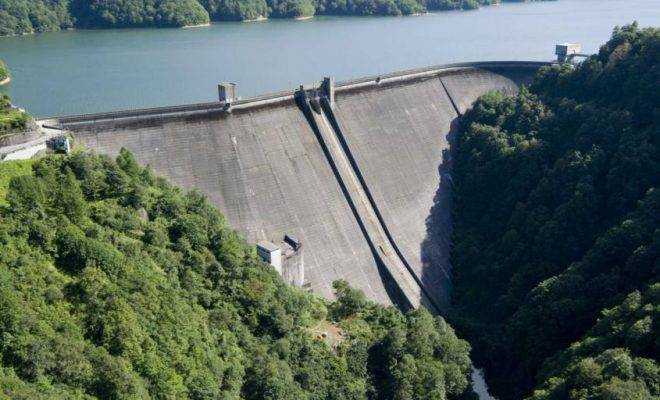Japan’s hidden hydropower country harnesses water for carbon neutrality

[ad_1]
TOYAMA, Japan – Japan’s efforts to achieve net zero greenhouse gas emissions by 2050 are supported by local businesses in a region with untold potential for water and wind power.
As of last month, Toyama-based regional lender Hokuriku Bank has only used electricity produced by local hydropower for its data center in central Toyama Prefecture, about 260 km northwest of Tokyo.
The bank became the first company to subscribe to an electricity plan launched by the regional utility Hokuriku Electric Power Co. and Toyama Prefecture. For a premium added to the electricity bill, the company will be connected to the electricity produced by the hydroelectric plants managed by the prefecture.
A total of 2,615 tonnes of CO2 per year is expected to be reduced. For the bank, this means a 21% reduction in emissions.
Home to Japan’s tallest dam, the 186-meter-high Kurobe Dam, Toyama Prefecture early on became a hub for a wide range of manufacturers thanks to its sufficient power supply. It is the second in the country for potential hydraulic resources and the n ° 1 in terms of hydropower already developed.
Hokuriku Electric has announced that it will increase renewable energy production by 30% by the fiscal year ending March 2031 from fiscal 2018 levels. It plans to build more hydropower plants and modernize those existing.
The Hokuriku region, located in the northwestern part of Japan’s main island, Honshu, is known for its strong winds that blow from the Sea of ​​Japan. In Fukui Prefecture, there are more than a dozen wind projects currently under evaluation by the government, including several offshore wind projects.
The projects’ total planned generation capacity is 1.34 million kW, more power than a nuclear power plant that Kansai Electric Power Co. operates in the same prefecture.
In neighboring Ishikawa prefecture, 12 wind farms were in operation last August, and nine more were under consideration. Many of these planned projects are in the north of the Noto Peninsula, where the winds are strong and steady. Ishikawa, known for its tourist destination of Kanazawa, has the most wind turbines of the three prefectures of Hokuriku.
Much of Japan’s existing wind capacity is in the north, Hokkaido, and the Tohoku region. But these areas have experienced a decline in the availability for connecting wind farms to regional power grids. The developers looked to other parts of Japan with greater potential for network connectivity.
“Power project operators understand that the winds are good from Noto to Fukui,†said Akitoshi Umeda, chairman of Tokyo-based OSCF, who is involved in planning for onshore and offshore wind farms in Fukui.
An environmental protection official in Fukui said not all planned projects would necessarily be approved, given their proximity and other factors.
In addition to renewables, new efforts are being made to produce hydrogen from aluminum, an energy-intensive base industry for the Hokuriku region.
In the city of Takaoka, in Toyama prefecture, the startup Alhytec recovers the shavings produced by grinding aluminum components, mixing them with a chemical solution to create hydrogen. With help from Toyota Motor, the company has tested the technology and confirmed its effectiveness, President Nobuaki Mizuki said.
Recycled aluminum is generally used to make car engines. But with conventional engines expected to be redundant as electric cars take over in the future, aluminum shavings can take on new life in hydrogen production.
[ad_2]


